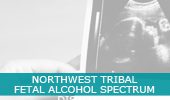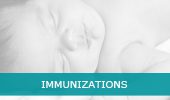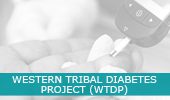Mission
It is well documented that American Indians and Alaska Natives (AI/AN) carry a disproportionate burden of oral disease. According to the IHS 1999 Oral Health Survey, the majority of AI/AN children have tooth decay, most adults have lost teeth because of dental disease, periodontal disease is a significant problem for adults, and there is limited access to both preventive and restorative dental care. Profound health disparities exist between the oral health status of AI/ANs in the Pacific Northwest compared to non-AI/ANs in the same area. These differences result from multiple etiologies, but one clearly identifiable factor is the loss of dental public health infrastructure by the Indian Health Service over the last decade. The Indian Health Service (IHS) has made additional funds available to create dental support centers with the goal to improve the oral health of AI/AN people. The Northwest Tribal Dental Support Center (NTDSC) is currently in its twenty-first year of operation.
Goals
The overall goals of the NTDSC are to provide training, quality improvement, and technical assistance to the 43 IHS/Tribal dental programs in the Portland Area, and to ensure that the services of the NTDSC result in measurable improvement in the oral health status of the AI/AN people served in the Portland Area. The objectives are to continue oral health assessment, ensure quality of care, Implement clinical and community-based prevention programs, and provide continuing dental education. Furthermore, NTDSC works closely with IHS and other dental support centers towards meeting national HP/DP objectives. The objectives of NTDSC are supported through ongoing communication with local dental programs via site visits, email groups, telephone consultation, and an annual Area-wide dental meeting.
2024 Area Dental Meeting Info Coming Soon! Previous Year’s info is below.
The Northwest Tribal Dental Support Center (NTDSC) began in 2000 and is grant funded through the Indian Health Service-Division or Oral Health. The NTDSC is funded in five year grant cycles and is in it’s fifth-five year grant cycle (2020-2025).
IHS Division of Oral HealthIMG_6477
http://www.doh.ihs.gov/
“The Impact of Oral Disease on the Lives of Washingtonians”
http://www.doh.wa.gov/cfh/Oral_Health/burden.htm

Ticey Mason (Siletz), MAOL
NTDSC Project Director
Dr. Sean Kelly
Clinical Consultant
Dr. Miranda Davis
Prevention Consultant
2024 Area Dental Meeting, Salishan Ocean Resort Gleneden Beach, OR May 7-9
Dental Conference Program
Day One (Tuesday)
- NTDSC Orientation
- Portland Area Dental Directors Meeting
- Cultural Considerations in Working Indian Country – Dr. Danica Brow
Day Two (Wednesday)
- NTDSC Working Map
- Prevention – What’s New – Dr. Miranda Davis
- GPRA – Dr. Sean Kelly
- Assessing the Oral Health Status of AIAN Children and Adults – Dr. Kathy Phipps
- Infection Control in Dentistry PNW Tribes
Day Three (Thursday)
2023 Area Dental Meeting, Squamish Clearwater Resort
Squamish, WA August 15-16
Dental Conference Program
Day One
- Navigating the 2018 AAP Classification System – Pam Ready
- Medical Emergencies in the Dental Setting final August 2024 – Amy Suhr
- Prevention What’s New – Miranda Davis
Day Two
- Trauma and Drama – Dr. Danica Brown
- Motivational Interviewing in Dentistry – Carrie Bader
- Putting it All Together – Trauma-Informed Approaches and Motivational Interviewing in the Clinic – Carrie Bader and Danica Brown
- Infection Control for Today’s Dental Healthcare Professionals 2023 – Eve Cuny, MS
- NW Tribal Dental Support Center – HPV Presentation – Lisa Bozzetti
- Portland Area Dental Meeting Dental Health Aide Presentation – Miranda Davis, Pam Ready, Kari Ann Kuntzelman
- We Smile Collaborative – Miranda Davis, Sean Kelly
2022 Area Dental Meeting, Squamish Clearwater Resort
Squamish, WA August 16-17
Dental Conference Program
Day One
- Indigenous Wellness Decolonizing Trauma Care – Danica Love Brown (Choctaw Nation of Oklahoma), MSW, PhD, NPAIHB
- Affirming and Welcoming Clinical Environments – Itai Jeffires (yesah/Occaneechi), NPAIHB
- Presentation on Constructive Conflict – Roni Brigggs (Cherokee), OSIYO
- How Do We Really Prevent Dental Disease? – Miranda Davis, DDS, NPAIHB
Day Two
2019 Area Dental Meeting
Day One Orientation
- We Shall Remain- – YouTube
- Northwest Tribal Dental Support Center – Ticey Mason
- Indian Health Service: Division of Oral Health – Dr. Cheryl Sixkiller
- PH Dentistry and Prevention Orientation- Bonnie Bruerd
- Working in Indian Country Orientation- Bonnie Bruerd
- Oral Health Status Northwest AI-AN People – Dr. Kathy Phipps
Day Two
- Acute Dental Pain Management & the Opioid Crisis – Dr Brandy Larson
- Communicating with Policymakers – Joe Finkbonner
- IHS Division of Oral Health Update – Dr. Tim Lozon & Dr. Cheryl Sixkiller
- Building People – David Cournoyer
- IHS Survey of Children 1-5 Years – Dr. Kathy Phipps
- NDTI – Dr. Miranda Davis
Day Three
2018 Area Dental Meeting, Tulalip Casino and Resort,
Tulalip, WA August 20-23
- Day One Orientation
- Indian Health Service: Division of Oral Health, Dr. Cheryl Sixkiller
- Woking in Indian Country, Ticey Mason & Bonnie Bruerd
- Oral Health Status of Northwest American Indian People, Dr. Kathy Phipps
- Top 10 Clinical Recommendations, Dr. Bruce Johnson
- Public Health Dentistry & Prevention Overview, Dr. Bonnie Bruerd
Day Two
- Healthy Healers, Dr. Tina Woods & Dana Diehl
- DHAT Update, Christina Peters
- Minimally- Invasive Dentistry: Lessons Learned, Panel
- Oral Health Survey Training for 2018, Dr. Kathy Phipps
Day Three















